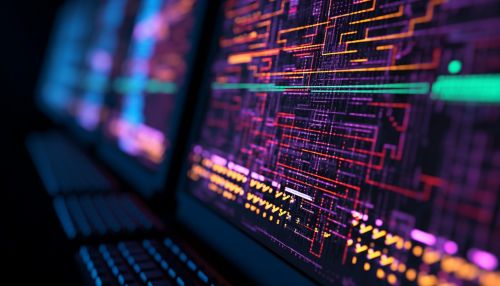Preprocessor
Introduction
A preprocessor is a program that processes its input data to produce output that is used as input to another program. The output is said to be a preprocessed form of the input data, which is often used by some subsequent programs like compilers. The amount and kind of processing done depends on the nature of the preprocessor; some preprocessors are only capable of performing relatively simple textual substitutions and macro expansions, while others have the power of full-fledged programming languages.


Preprocessor Directives
A preprocessor directive is a line in a program that begins with the character '#'. These directives are processed by the preprocessor before the program is compiled. The directives give instructions to the preprocessor to preprocess the subsequent code. The most common directives are '#include', '#define', and '#ifdef', among others.
Role of Preprocessors
Preprocessors play a crucial role in software development, especially in languages like C and C++. They provide the ability to include libraries, to allow conditional compilation, and to implement macros. They also help in making the code more readable and maintainable.
Types of Preprocessors
Preprocessors can be categorized into two types: language-specific preprocessors and general-purpose preprocessors. Language-specific preprocessors are designed to be used with a particular programming language. General-purpose preprocessors are designed to be used with any programming language.
Language-Specific Preprocessors
Language-specific preprocessors are designed to work with a specific programming language and understand its syntax and semantics. Examples of such preprocessors are the C preprocessor, the Fortran preprocessor, and the Python preprocessor.
General-Purpose Preprocessors
General-purpose preprocessors are not tied to a specific programming language. They operate at a textual level and can be used with any programming language. Examples of such preprocessors are M4 and Gema.
Preprocessing Techniques
There are several techniques used in preprocessing, such as macro expansion, file inclusion, conditional compilation, and line control.
Macro Expansion
Macro expansion is a method where a preprocessor replaces a macro name in the source code with its associated value. This technique is commonly used to define constants and to create inline functions.
File Inclusion
File inclusion is a technique where a preprocessor includes the contents of a specified file into the source code. This is commonly used to include library files in the source code.
Conditional Compilation
Conditional compilation is a technique where a preprocessor includes or excludes parts of the source code based on certain conditions. This is commonly used to create portable code that can be compiled on different platforms.
Line Control
Line control is a technique where a preprocessor controls the line numbers and file names in the output code. This is useful for generating accurate error messages during the compilation process.
Conclusion
Preprocessors are an integral part of the software development process. They provide a way to manipulate the source code before it is compiled, allowing for more flexibility and control over the code. Despite their power, preprocessors should be used judiciously, as they can make the code more complex and harder to understand if used excessively.
See Also
- Compiler - Interpreter - C - C++ - Fortran - Python - M4 - Gema
